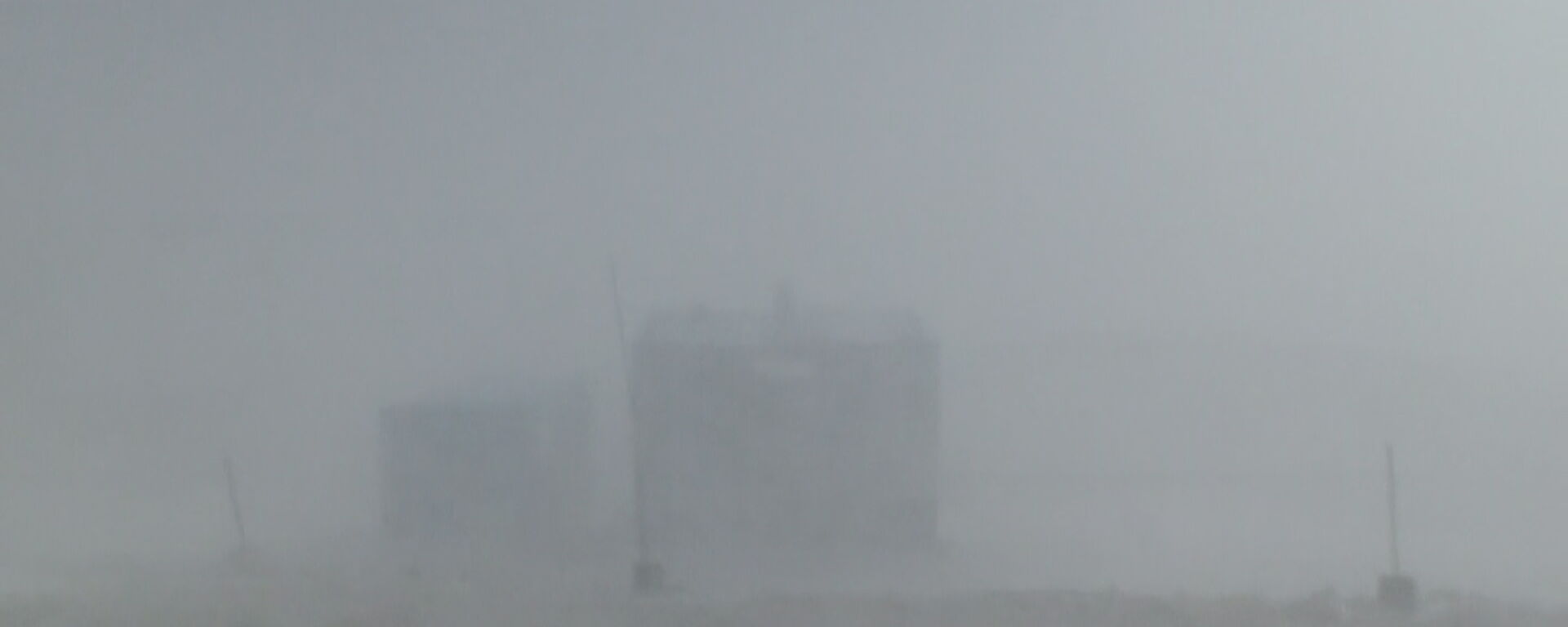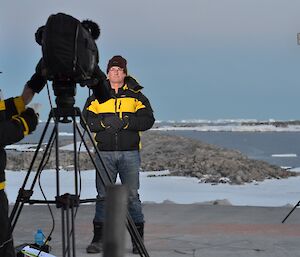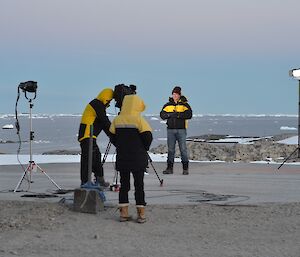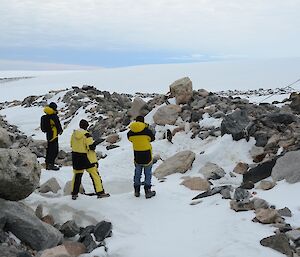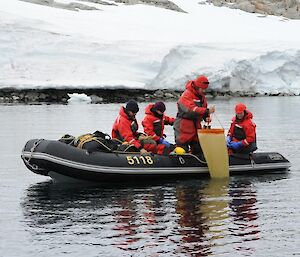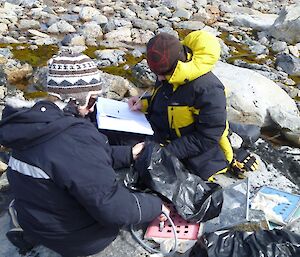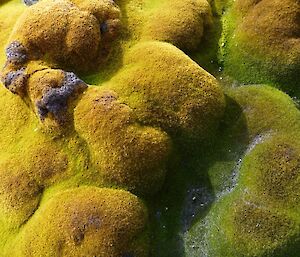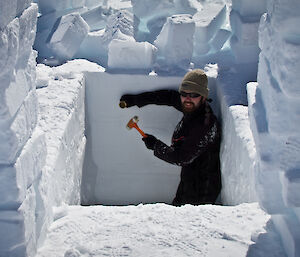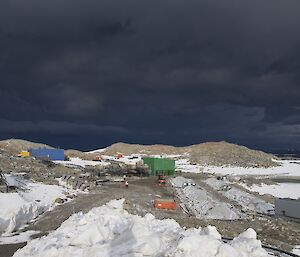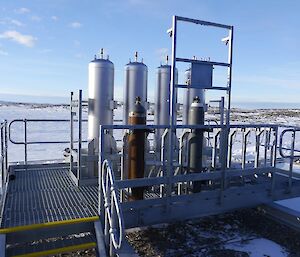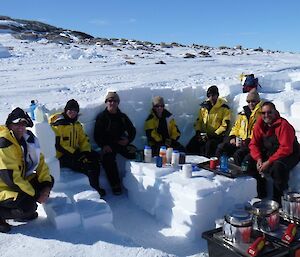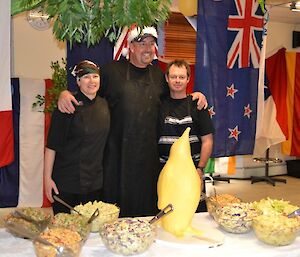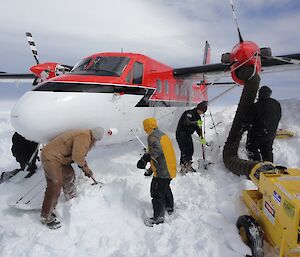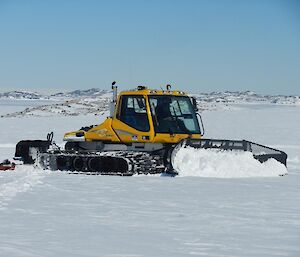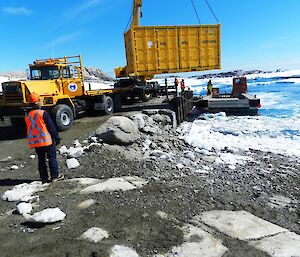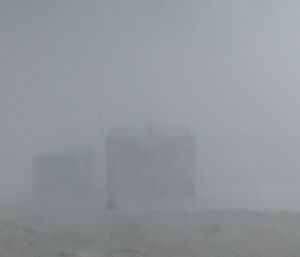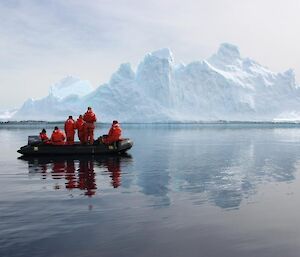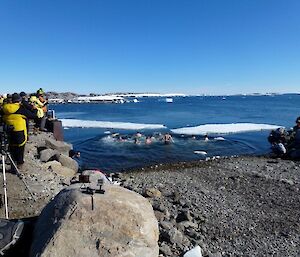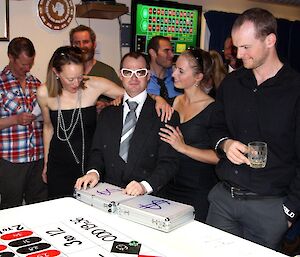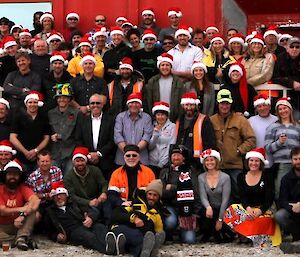Here at Casey, in approximately six weeks time the 2011/2012 Australian Antarctic summer program will come to an end.
During the past four months there has been a vast amount of activity. This has included varied, complex and interesting science programs such as the marine science team performing one task which required the collection and successful transportation back to Hobart of an array of live invertebrates for further study; the ‘mobile’ moss team installing equipment to measure the climate on the worlds driest and windiest continent of days gone by; drilling for ice cores at Law Dome; providing an insight into the changing behaviour of the Totten drainage basin in East Antarctica; the provision of scientific information on krill predators through research, survey and monitoring activities; and using technology to measure the winter spatial foraging patterns and net energy gain of adult female elephant seals.
Another area of science was the fuel spill remediation work which involved in situ management of a contaminated site using a Permeable Reactive Barrier (PRB). In 1999 a fuel spill at Casey resulted in contaminant migration downstream through permafrost. The remediation process involves excavating contaminated soil piled in a contained treatment cell.
There has also been a great deal of work from the trade groups who keep the station running so that the science can be undertaken. Summer trades work has included the commencement of construction of a new east wing on the accommodation block; sparkies and plumbers performing countless maintenance procedures; the diesos working on plant and equipment ensuring all equipment is operational for work and recreational purposes; the team of Field Training Ofiicers providing the necessary survival and field training for us to better understand the elements and ways to survive in the harsh conditions; the communications team providing daily VHF radio contact to various aircraft and field parties; the communications technicians providing data connectivity and other associated tasks related to station life; the storeman ensuring all ordered cargo and goods have arrived and accounted for and that RTA (retunr to Australia) items are itemised, packed and prepared for return on the last voyage from here.
In addition we have also had a substantial and dedicated meteorology team who have undertaken their maintenance requirements both here and off station; daily balloon releases and the many number of weather forecasts for both aeronautical and local area forecasts. Also the AGSO’s (aircraft ground support officers) who travelled daily to the skiway to ensure it was prepared for the various aircraft assisting with science programs and other logistical services. Additionally up at Wilkins runway there were eight members of Casey station permanently working tirelessly on the preparation of the runway for the A319 airbus flights from Hobart which included one medical evacuation.
Of course we cannot forget the doctors who come to Antarctica to provide medical coverage for one and all who are working here. Thankfully we have not caused them to practice their medical skills too often, with only a couple of medical issues to deal with.
The management team has worked tirelessly to ensure that station life has had a happy atmosphere; duties for expeditioners are shared around; science programs are supported; outside visitors’ (60 Minutes and Sunrise) needs are catered for and the daily planning of approximately 50 flights are performed to allow a successful aviation season to be met. Flights such as McMurdo to Casey, Casey to Bunger Hills, Casey to Dome C, Casey to Davis and the A319 flight from Hobart to Casey were all planned and successfully completed. Flights such as McMurdo to Casey, Casey to Bunger Hills, Casey to Dome C, Casey to Davis and the A319 flight from Hobart to Casey were all planned and successfully completed.
Finally… the chefs. It is an important undertaking in keeping everyone well fed, ‘entertained’ during their slushy duties, and the station morale at an acceptable level by providing good and nourishing meals. By providing morning tea, lunch and dinner at this moment in time approximately 360+ meal sittings have been catered for, with anywhere between 65 to 100 expeditioners at each sitting!
Those high numbers of expeditioners at Casey have recently been almost halved by the departure of 50+ people in two A319 flights to Hobart. Currently on station there are 46 people with another four at Wilkins closing down the runway for the season. This reduction in numbers has in turn reduced the work load in many areas which were extremely busy before.
On top of all this activity there was resupply and changeover scheduled just before Christmas 2011. Due to weather conditions this resupply almost went down as one of the longest in history, however all cargo and fuel were transferred ashore, and the outgoing wintering party farewelled.
And just before resupply we had a day of records. On the 18th December Casey witnessed some rare and amazing weather lash the station. Blowing snow reduced visibility to 20 metres and at 07.29 there was a wind gust of 109 knots (202kph). Two days later a low pressure record at station of 940.2 hPa indicated how intense this low pressure system was to be. Thunderstorms are extremely rare in Antarctica. A lightning strike apparently struck the Green Store, which in turn set off the fire alarms, which in turn required all expeditioners on station to muster and be accounted for.
Of course besides work, there has been play! Many have taken the opportunity to travel for rest and recreation to the field huts located around the area. Berg cruises have been welcomed by one and all; Christmas day was a success with Father Christmas visiting and providing gifts; Australia Day celebrations which included a swim, BBQ and cricket game was enjoyed by all; various theme nights such as Caz Casino night, Aliens and Cowboys and a Medieval night were well attended. Further social evenings have been planned, such as a quiz night, dart, pool and table tennis competitions to name just a few. Many have taken the opportunity to travel for rest and recreation to the field huts located around the area. Berg cruises have been welcomed by one and all; Christmas day was a success with Father Christmas visiting and providing gifts; Australia Day celebrations which included a swim, BBQ and cricket game was enjoyed by all; various theme nights such as Caz Casino night, Aliens and Cowboys and a Medieval night were well attended. Further social evenings have been planned, such as a quiz night, dart, pool and table tennis competitions to name just a few.
Six weeks is still a long time to go before our departure and I am sure we can continue to work hard, but also enjoy our down time.

